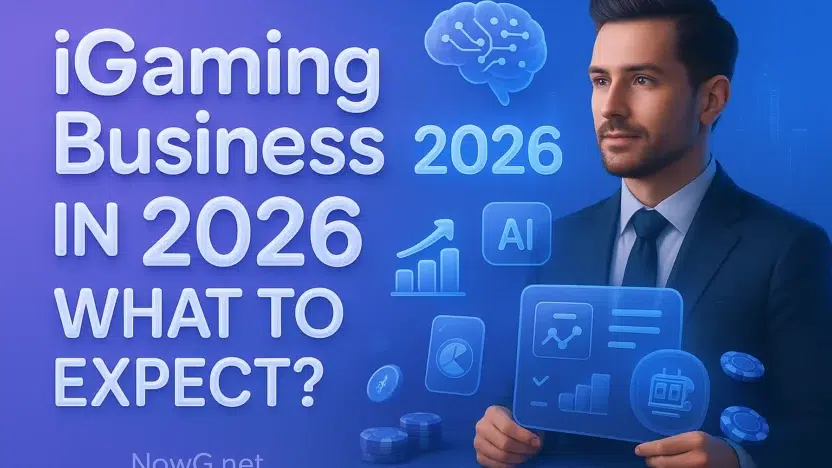Last Updated on October 22, 2025 by Caesar Fikson
The gap between operators that “optimize” and operators that compound is widening. In 2026, winning won’t come from shouting louder or dangling fatter bonuses—it’ll come from systems that convert signals into actions while the moment still matters. Real-time attribution. LTV-aware promos. RG-first personalization. Fewer meetings, cleaner math. That’s the shape of the industry now.
Market outlook: growth with friction
Expansion continues, but it’s uneven. Mature, tightly regulated markets squeeze margins with tougher advertising rules, affordability checks, and higher compliance overhead. Emerging markets open doors but demand local payments, localized content, and surgical compliance. Consolidation resumes where cost of capital favors scale. Partnerships—media, streaming, creators—replace blunt performance buys as reliable reach fragments. The surprise for many will be how much growth comes from cross-sell and retention instead of net-new GEOs.
Player behavior: less bonus hunting, more relevance
Players still love a good promo, but fatigue is real. They want speed (instant payouts), fairness (transparent odds and rules), and relevance (lobbies that adapt to intent). Live contexts dominate attention—same-game parlays, instant markets, live dealer—and “mission-led” engagement outperforms headline cash offers. Communities—tournaments, leaderboards, watch-bet experiences—keep sessions sticky when novelty is curated, not sprayed.
Product trends to plan around
- Sportsbook – live betting volume grows; micro-markets and SGP builders anchor session time; cash-out remains a key confidence lever.
- Casino – live dealer expands, crash/arcade hybrids add pace, curated drops beat banner sprawl; lobby re-ranking matters more than new banners.
- Cross-sell – sportsbook → casino during event lulls; casino → sportsbook via “watch and wager” hooks. The connective tissue is personalization that respects RG posture.
Acquisition and marketing: the cookieless reality
Third-party IDs keep fading. First-party data and server-to-server (S2S) tracking become the acquisition backbone. Content publishers and affiliates with trusted audiences gain leverage. Influencer buys work only when compliance is template-baked and measurement is event-level, not sentiment-level. Creative fatigue is the quiet killer; modular templates plus landing orchestration beat endless variants.
Compliance and RG: speed with brakes
To be frank, compliance is no longer a “review step”—it’s an executable rule set. Jurisdictional copy, age gates, targeting limits, and RG intensity should live in the same engine that selects creatives and offers. If it isn’t policy-as-code, it will break on a Friday night.
Payments: instant or bust
Players judge trust by payout speed. Account-to-account rails, open banking, and local APMs are table stakes. Crypto’s role remains jurisdiction-specific; operators win by offering the approved “fast lane,” not by experimenting at the edges. Chargeback and refund telemetry must feed fraud and LTV models in near-real-time.
The AI and automation layer: where the margin hides
The tech isn’t “coming”; it’s here. The winners in 2026 pair interpretable models with hard guardrails and ship decisions that are explainable after the fact.
AI capability map operators actually use
| Capability | What it does | Where it runs | Primary KPI | Guardrails |
|---|---|---|---|---|
| LTV prediction | Prices CPA and promo exposure by early value | Acquisition, CRM, finance | Bonus cost per NGR; ARPU | RG overrides; policy versioning |
| Uplift modeling | Funds promos only for persuadables | CRM, onsite nudges | Incremental revenue per promo | Always-on holdouts |
| Contextual bandits | Chooses the next message/tile now | Creative, lobby, channels | First-fold CTR; bet/dep CR | Exploration caps; latency budget |
| Survival/churn | Preempts lapse with the lightest touch | Lifecycle journeys | Reactivation rate; N-day retention | Quiet periods; RG posture |
| Graph fraud + interpretable ML | Quarantines abuse clusters precisely | Risk, payouts | Fraud rate; false positives | Reason codes; 24-hour SLA |
| Shadow attribution | Simulates payout policy changes | Partner economics | Disputes down; net profit up | Freeze versions mid-campaign |
It’s frustrating to watch “AI” outputs that no one can defend. The fix is simple: scores plus reason codes, decisions plus audit trails.
Operator priorities that separate compounding from chaos
| Area | 2026 goal | What “good” looks like | The pitfall to avoid |
|---|---|---|---|
| Identity & tracking | Durable first-party backbone | S2S postbacks, idempotency, replayable truth | Cookie crutches and pixel soup |
| Attribution | Policy you can simulate | Parallel models, versioned switches | Surprise invoices and ad-hoc exceptions |
| Economics | Price on predicted value | LTV-weighted CPAs, timed boosts with auto-reversion | Paying for volume, not durability |
| Creative & landing | Relevance without sprawl | 2–3 templates + landing orchestration | Banner farms, misaligned promises |
| Compliance & RG | Embedded, not bolted on | Policy-as-code; creative refuses to violate | Manual review bottlenecks |
| Fraud & quality | Precision over paranoia | Evidence packs; cluster holds; fast SLAs | Blanket bans and quiet leakage |
| BI & finance | Numbers anyone can replay | Event-level exports that reconcile | Dashboard theater without causality |
Sportsbook specifics: timing is the product
Odds move, attention spikes, and patience shrinks. Contextual bandits and sequence models decide the next tile or message within a latency budget. Uplift protects promos when excitement is high and ROI is low. Time-decay attribution outperforms last-click around live events, but only if versions are frozen before kickoff. Cash-out isn’t a feature; it’s a trust signal. Treat it as such.
Casino specifics: habit plus curated novelty
Players return for ritual, stay for fresh novelty that feels familiar. Re-rank the lobby with exploration caps. Missions beat blanket match bonuses. Live dealer thrives when “what’s on now” is obvious and localized. Crash/arcade content works when volatility preferences are learned, not assumed. Bonus cost per NGR, not just CR, decides whether “fun” was profitable.
Partnerships and creators: signal over sizzle
Creators with real audiences outperform rented reach. Give them modular creatives, landing variants, and evidence—first-fold CTR, deposit friction, retention curves—so they can improve placements like adults. Pay for durable value with LTV-aware tiers. The era of “spray the code and pray” is over.
Data contracts: the unglamorous advantage
Truth be told, most “data problems” are contract problems. Lock event schemas. Strongly type money with currency metadata. Assign ownership for taxonomy. If finance can’t replay last month and land on the same total, the BI is decorative. Contracts end arguments; dashboards don’t.
Risk and governance: why autonomy needs brakes
Autonomous decisioning without brakes is liability. Version policies. Cap exploration. Attach reason codes. Respect quiet periods. Keep human override for marquee moments—with automatic reversion. Culture follows process; process follows policy; policy must be code.
Affiliate operations in 2026: pay for durability, not noise
Affiliates remain the cleanest path to profitable scale—when economics reward what actually lasts. LTV-weighted CPAs, hybrid plans with guardrails, shadow attribution before model switches, fraud holds that come with evidence, and modular creative tied to landing hypotheses. When partners can plan, they invest. When they guess, they hedge.
What changes for teams
- Fewer meetings, more decisions.
- Fewer one-offs, more versioned policies.
- Less creative sprawl, more orchestrated relevance.
- Less promo spend, higher incremental revenue.
- Fewer disputes, faster resolutions with evidence.
Honestly, that’s the transformation: calm operations with faster loops.
A candid outlook
Growth remains available, but not by doing more of yesterday. The operator that prices every nudge, offer, and partner payout on predicted value will defend margin while competitors chase discounts. The operator that turns compliance into code will move fast without fines. And the operator that treats data as a contract—replayable, auditable, shared—will experiment without fear.
A practical nudge to act
If tomorrow morning every promo, placement, and partner payment had to defend itself with an explainable model and a reason code, what would you stop funding first—and what overlooked pocket would finally get its budget?
Where affiliate software fits when you’re serious?
The execution layer matters. An affiliate platform should give event-level S2S tracking, versioned attribution with shadow mode, LTV-aware commission engines (CPA, RevShare, Hybrid, CPL, CPC, Flat), interpretable fraud analytics with evidence packs, automation for temporary CPA boosts and creative rotation, and BI-ready exports finance can replay to the cent. That’s the operational spine that makes the rest of this article real.




